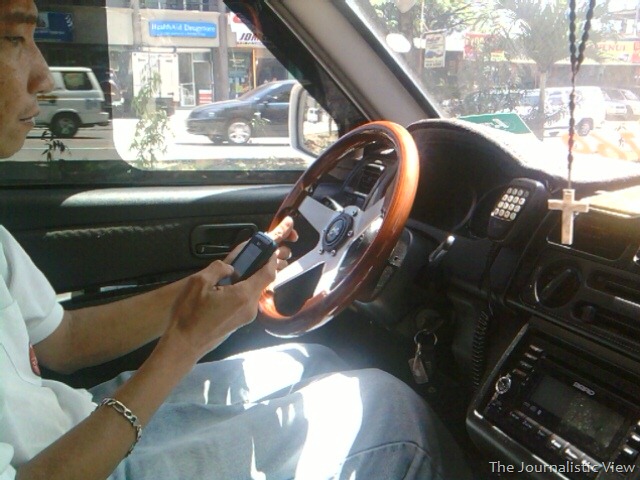Are We Ready?
What happened to Japan should be an eye opener for every nation. No one can stop or even can predict natural calamities. Although many became helpless too in man-made tragedies.
The Philippine Archipelago occupies the western rim of the Pacific Ocean (western segment of the Pacific Ring of Fire), a volcanically active part of the earth that is characterized by an ocean-encircling belt of active volcanoes and earthquake generators (fault lines).
Earthquakes occur within the Philippines every so often mainly because the country is situated along two major tectonic plates— the Pacific Plate and the Eurasian Plate. It experience an average of 887 earthquakes every year, or 2 quakes per day. Out of 887 earthquakes, we can feel around 100 quakes in a year.
According to the study, if Metro Manila is struck by an intensity 7.2 earthquake, there will be 176,000 heavily damaged or collapsed buildings and 348,000 partially damaged buildings. It was also noted that there will be 33,500 deaths with almost 114,000 injuries.
The need for earthquake preparedness is imperative. So what to do?
Before an earthquake:
1. Repair defective electrical wiring, leaky gas lines and inflexible utility connections.
2. Bolt down or secure to the wall your water heaters, refrigerators and gas appliances.
3. Place heavier and larger objects on lower shelves.
4. Store bottled foods, glass and other breakables on low shelves or in cabinets that fasten shut.
5. Locate safety spots in each room under a sturdy table or against an inside wall.
During an earthquake:
1. If you’re in a structurally sound building, protect yourself by getting under a sturdy table or desk and holding on to it while shaking occurs. You can also protect your head with your arms.
2. Stay away from glass windows, doors and walls and anything that could fall such as lightning fixtures or furniture.
3. If you are in a bed and an earthquake strikes–stay there and hold on to the edges of the bed and protect your head with a pillow. If you are under a heavy light fixture that could fall, move to the nearest safe place.
4. Use a doorway for shelter only if it is in close proximity to you and if you know it is s strongly supported, load-bearing doorway.
5. Do not use elevators.
6. If you are inside a moving vehicle, do not attempt to cross bridges, overpasses or flyovers which may have damaged. Stop as quickly as safety permits and stay in the vehicle. Avoid stopping near or under buildings, trees, utility wires and posts.
7. If you are near the shore and feel and earthquake, it is safest to assume that a tsunami might occur and move quickly to higher ground.
8. If you are outside, move to an open area. Stay away from power lines, poles and concrete structures that may fall or collapse.
9. Move away from mountainous area or steep hill slopes where landslides can occur.
10. If trapped under debris, DO NOT light a match or move about or kick up dust. Cover your mouth with a handkerchief or clothing. Tap on a pipe or wall so recuers can locate you. Shout only as a last resort; shouting can cause you to inhale dangerous amount of dust.
After an earthquake:
1. Stay calm and don’t panic.
2. Check yourself and others for injuries.
3. Do not enter partially damaged building. Aftershocks might occur, causing these structures to collapse.
4. Check for spills of chemicals, toxic or flammable materials to avoid potentially disastrous situation.
5. Check for fires.
6. Open cabinets cautiously.
7. Check water and electrical lines for damage.
8. Should you decide to evacuate, leave a note stating where you will go.
9. Follow official advisories and warnings.
10. Avoid needless telephone and road use to allow authorities unhampered use of these for relief and rescue operations.
A strong earthquake is a natural tsunami warning.
Before a tsunami:
1. Do not stay in low-lying areas and seaside areas after an earthquake.
2. Other natural signs include a sudden lowering of sea level, or unsual rise and fall of sea level.
3. Fish and other marine life may be exposed when the sea retreats, never go down to the beach to collect these. Tsunami waves might rush back anytime and can carry you out to the sea with great force.
4. Tsunamis are also preceded and/or accompanied by unusual sounds. Be alert for those sounds too.
5. Immediately vacate and seek higher ground. Stay there until all signs of danger have passed.
During a tsunami:
1. Turn on your radio if there is a tsunami warning.
2. Move inland to higher ground immediately and stay there.
After a tsunami:
1. Stay away from flooded and damaged areas until officials says it is safe to return.
2. Stay away from debris in the water.



5 Comments
SnuggleSlut
Wow really comprehensive list. All really great information too. I'll keep it in mind should I ever visit an earthquake/tsunami zone.
...with ♥, Amber
I have never been in an earthquake, Knock on wood. I hope that with your blog post, people will understand that there are several precautions that you can take to survive an earthquake. These are such good ideas. Thank you for sharing.
Dothy
Sana wala munang major disaster na mangyari. Alala ko pa yung major earthquake nung 1990. Grabe ang damage na nangyari dito sa Luzon lalo na sa Baguio. HAy sana wag maulit.
Anonymous
oh no! i am very much afraid of earthquakes, i experienced a strong one on the year 1990
J Allyssa
The Metro Manila isn’t ready and I’m sure of it. Mas nakakatakot kasi ang aggressive ngayon magtayo ng high rise condominiums. Sana higpitan ang pagkuha ng bilding permit, safety of the majority din naman yun in the long run. 🙂